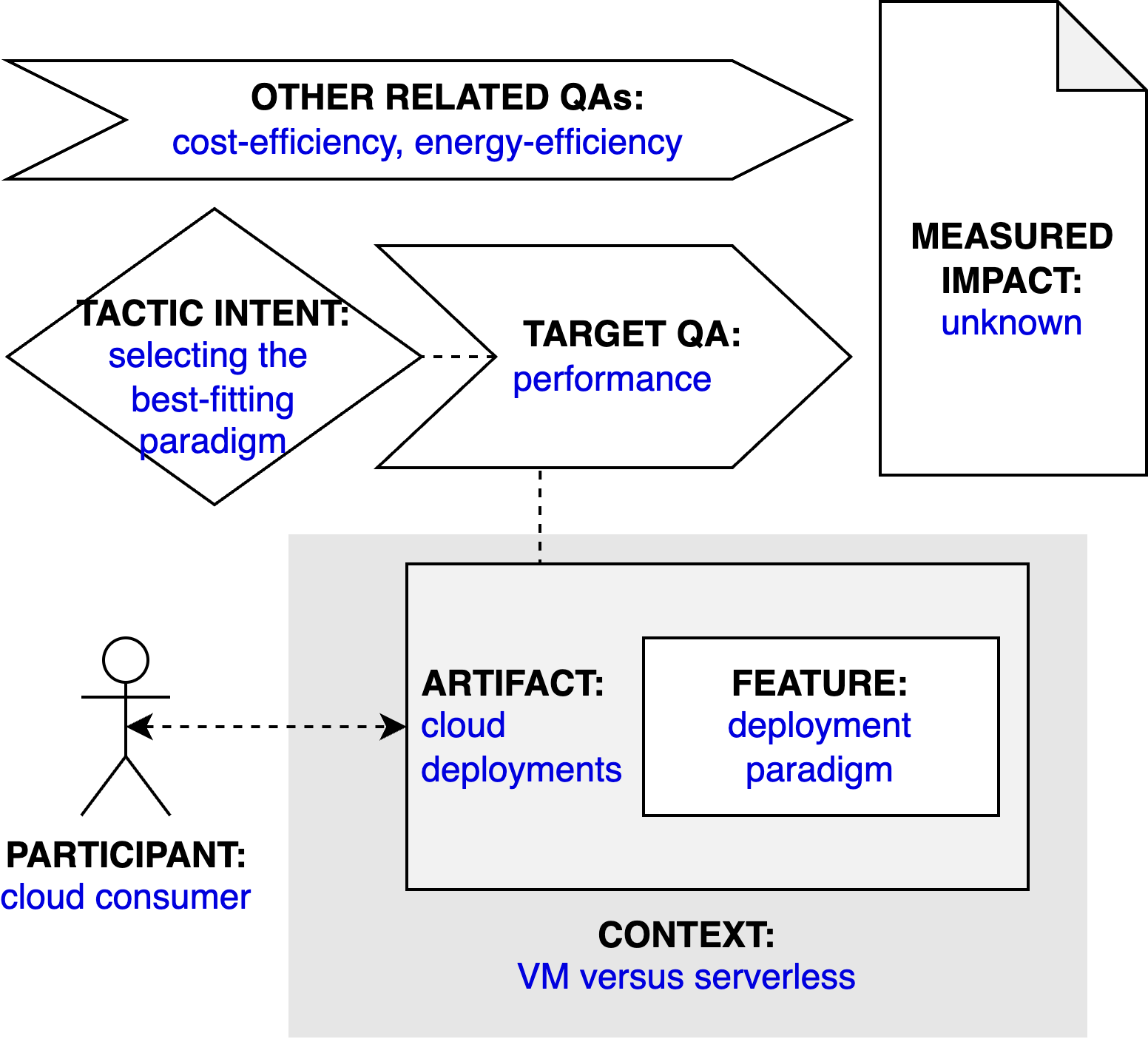All Tags
AWS
ai
algorithm-design
architecture
browser
cloud
cloud-efficiency
cloud-principles
cost-reduction
data-centric
data-compression
data-processing
deployment
design
documentation
edge-computing
email-sharing
energy-efficiency
energy-footprint
enterprise-optimization
green-ai
hardware
libraries
llm
locality
machine-learning
maintainability
management
measured
microservices
migration
mobile
model-optimization
model-training
multi-objective
network-traffic
parameter-tuning
performance
queries
rebuilding
scaling
services
storage-optimization
strategies
tabs
template
testing
workloads
Tactic: Choose fitting deployment paradigm
Tactic sort:
Awesome Tactic
Type: Architectural Tactic
Category: resource-adaptation
Title
Choose fitting deployment paradigm
Description
The currently most prominent deployment paradigms are VM, container, and serverless architectures. Choosing the fitting paradigm for the workload will optimize the performance. There is no one-size-fits-all solution regarding choosing the fitting deployment paradigm. A serverless architecture ensures that services are automatically shut off when they are finished. Moreover, when using a serverless architecture the service utilization is much lower compared to using a VM as the overhead is much smaller. This is expected to have a positive effect on the energy consumption. A possible negative effect of a serverless architecture on energy efficiency occurs in the scenario where the service is frequently called but not constantly on. Starting the service up and down could consume relatively more energy compared to spinning one VM that is constantly on and frequently called. Little research has been conducted on the effect of the deployment paradigms on energy consumption.
Participant
Cloud consumer
Related software artifact
Cloud deployments (abstract)
Context
VM versus serverless
Software feature
Deployment paradigm
Tactic intent
Selecting the best-fitting deployment paradigm to optimize performance and cost
Target quality attribute
Performance
Other related quality attributes
Cost-efficiency, energy-efficiency
Measured impact
When organizations decide to migrate their software to the public cloud, cloud consumers need to decide upfront which deployment paradigm to embed as it is costly and time-consuming to change the deployment paradigm after launching the application. Hence, with this analysis, we aim to support cloud consumers in choosing the fitting deployment paradigm. We designed an experiment to measure the impact of the deployment paradigm on the energy consumption. Due to time constraints, the experiment could not be executed successfully. We refer the reader to section 7.2.3 and 7.2.4 of the source for further reading.
Source
Master Thesis “Architectural Tactics to Optimize Software for Energy Efficiency in the Public Cloud” by Sophie VosGraphical representation
